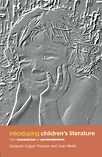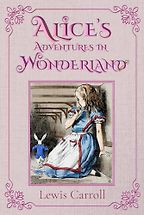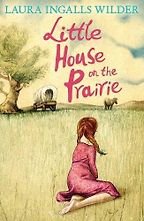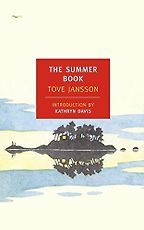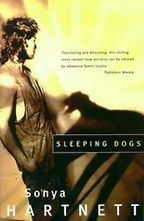As well as being a professor of international children’s literature, you are director of the Forum for International Children’s Books at the University of Worcester. What is that and what does it do?
I’ve been in charge of the Forum for nearly twenty years now. It works across the University of Worcester, across all subjects and includes anyone who’s interested in doing something with us. We work with academics and children investigating such topics as heroism, disability (which came from the children) and even obesity.
The project on obesity was suggested by a colleague from sports science. He was curious to know what connections there might be between children’s literature and obesity because that was one of his research areas. That started off a whole line of research into body size and attitudes to obesity in English children’s literature.
We also now have a very successful storytelling festival for children (originally suggested by our vice-chancellor, Professor David Green), run by Steve Boffy, formally director of arts for Worcester and Herefordshire. It is called “Beeline” and runs throughout October offering not only great storytelling by much loved authors like Michael Rosen and David Almond but other art activities like drama and puppetry. Last year there were 4,500 children involved. So from little things great things grow.
Two years ago, we ran the International Research Society for Children’s Literature, which is a genuinely international association and we had 275 delegates from 44 countries.
The UK is very well known for producing wonderful children’s books. But it’s also an important field in many other countries. Are there any countries that you feel are particularly comparable or interesting in their output?
In America there’s the Children’s Literature Association (ChLA), which has around a thousand members. There’s also ACLAR, which is the Australasian Children’s Literature Association for Research, and that’s very vibrant. There are research groups in Taiwan which do a lot. It is very strong in the Nordic countries where there is the Swedish Institute and also the Danish National Institute for Research in Children’s Literature. Over the years, I’ve worked closely with all of these.
You’ve chosen the overall theme of childhood and relationships.
In this selection of books, there are two that deal with the relationship between grandparents and children, one that deals with the impact on family relationships in tough survival conditions, one about a complex and dangerous sibling relationship and one, my first, that is imaginative, clever and fun!
I used to have two copies of Alice in Wonderland when I was about seven. One everyday one for weekdays and one was my Sunday best copy. I learnt so much about ways of thinking and playing with language from reading Alice in Wonderland.
I agree with you about Alice in Wonderland. I loved it. I couldn’t get enough of it. I have never really analysed why I needed to read it over and over again—it just seemed so playful to me.
I think that for me it is because it is so embedded in academic thinking and academic training. It is about sideways thinking, lateral thinking and connections. That whole focus, from a literary perspective, on language—the puns and the syllogisms.
“Alice in Wonderland is about sideways thinking, lateral thinking and connections”
The interesting thing about this book is that it is set in a very antagonistic world. When Alice falls down the rabbit hole she thinks she’s got to Australia. She says, “I must be in the Antipathies,” instead of the Antipodes. That ‘antipathetic’ relationship runs right underneath this text.
Lewis Carroll was a mathematician, wasn’t he?
Yes, yes. He was a very highly respected and acclaimed mathematician and that whole focus on the logic is what we do as academics. I could pick out some examples from my Alice if you like?
Yes, please.
What I picked out was a conversation at the Mad Hatter’s tea party with the March Hare:
“Do you mean that you think you can find out the answer to it?” said the March Hare.
This is the riddle about why a raven is like a writing desk.
“Exactly so,” said Alice.”
“Then you should say what you mean,” The March Hare went on. “I did,” Alice replied, “at least, I mean what I say, that’s the same thing, you know.”
“Not the same thing a bit!” said the Hatter. “Why, you might just as well say that, ‘I see what I eat’ is the same as ‘I eat what I see’. You might just as well say,” said the March Hare, ‘that I like what I get” is the same thing as “I get what I like.'”
In there, there is all this emphasis on exactness and then you go through to the Mock Turtle’s story when they’re talking about education:
Alice did not feel encouraged to ask any more questions about it, so she turned to the Mock Turtle and said, “What else had you to learn?”
“Well, there was Mystery,” the Mock Turtle replied, counting off the subjects on his flippers, “Mystery, ancient and modern, with Seaography, then Drawling, the Drawling-master’s an old conger eel, that used to come once a week, he taught us Drawling, Stretching, and Fainting in Coils.”
“What was that like?” said Alice. “Well, I can’t show it you myself,” the Mock Turtle said, “I’m too stiff.” Hence, my trying to touch my toes yesterday. “And the Gryphon never learnt it.”
It is a clever and humorous play on education. Lewis Carroll is also satirising the inconsistencies of nineteenth-century England—which was an increasingly bureaucratic system. England was becoming more rule-bound, especially by new pressures of time as a result of industrialisation. For example, with the institution of railways and railway timetables and town clocks being put up.
Where would you like to go next on our odyssey? I say ‘odyssey’ because we are travelling around the world with your choices.
In contrast to Alice In Wonderland, my next book is the Little House on the Prairie by Lauren Ingalls Wilder, where the family has to negotiate and find out what the rules are for living in the wilds of the American West. Their very lives are in danger and they have to come to terms with nature. They have to come to terms with the things that people now take for granted, for instance, having a house. One of the sections that I focused on when I was preparing for this, was where they’re building a log cabin.
The theme of this book is the importance of the family relationship, that is what holds them together, this is how they survive.
It’s a book about the early settlers and their struggles against nature, against or competing with other indigenous inhabitants—and all of this is set against the basic practicalities of finding food and shelter. The struggle of man against the wilderness is a theme which runs throughout American literature.
The mother is a stoical forbearing woman and the children are very strictly disciplined. Laura is seen as a rather more adventurous child compared with her older sister. But there is still that strict code of behaviour from the Puritan roots of those very early settlers that is built in. That whole moral code is built into the book as well.
I loved that morality when I was a child. It’s very comforting.
It is, it gives you rules to live by. When I talk to my students and we do Alice in Wonderland, a lot of them will find it very disconcerting.
“Their very lives are in danger and they have to come to terms with nature. They have to come to terms with the things that people now take for granted”
It strikes me that there is also a comparison with Robinson Crusoe by Daniel Defoe. Defoe goes into detail about survival to the point that you can learn how to save and plant wheat seed, where you can build a fence in order to keep your goats, where you can forage and how to make your own clothing and make bread. This was a way of informing people about these kinds of things in a society where they’ve become distanced from practicalities.
Get the weekly Five Books newsletter
There is a connection in that Laura Ingalls Wilders’ work is re-educating generations of Americans about where their history has come from.
Where do you want to go next?
Well, where I went next was to pick up on the idea of familial relationships with Tove Jansson’s The Summer Book. For me, this is one of the two books that I always need to have copies of (the other being Alice in Wonderland). I knew of Tove Jansson from the Moomins and then picked up her translated work for adults—short stories and the novellas. The Summer Book is about the relationship between a recently bereaved child and her grandmother and how they share this world of imagination. Have you read this?
I know it very well. It is one of my favourite books. I don’t really think of it as a children’s book.
I love the way it starts:
Below the veranda, the vegetation in the morning shade was like a rainforest of lush, evil leaves and flowers, which she had to be careful not to break as she searched. She held one hand in front of her mouth and was constantly afraid of losing her balance.
So this could be an adventure story.
“What are you doing?” asked little Sophie, “Nothing,” her grandmother answered. “That’s to say,’ she added angrily, “I’m looking for my false teeth.”
This is such an unusual beginning but it’s also so everyday—and I love that.
We understand that the mother has died. The father has taken Sophie and her grandmother to this island—along with an uncle—to cope with their bereavement.
On the island the grandmother, who is an artist, creates a whole world—a forest with animals made from pieces of wood for the granddaughter. The book explores ways in which they engage with each other.
“This is a book you must read. This is a book which has a deep wisdom, which deals with things beyond our comprehension and understanding”
I think what is really important is that adults can engage with this book. It is about an aging adult approaching her forthcoming death and adjusting to it. The grandmother and the child have a shared experience of the world that the grandmother will soon leave and the child will carry with her for the rest of her life.
Grief is never overstated in The Summer Book, but it’s there, and they’re healing each other. It struck me as capturing the importance of the connection between the old and the young—the extreme value to both of their simple interactions together.
For me, it is a really important and outstanding book. I’ve given it to my niece when I’ve felt my age and I’ve given it to people saying, ‘this is a book you must read.’
This is a book which has a deep wisdom, which deals with things beyond our comprehension and understanding.
We tend to hide from death. We don’t want to look at it. The Summer Book is perfect to read at any time in life, but perhaps especially so when you’re grappling with ideas of existence.
We seem to feel we have to pinpoint a defined answer that comes with a box that can be neatly ticked. In western society, I find, that it is all too fast – there isn’t enough time for mystery, exploration, even for expressing emotions.
We have a relationship with a fantasy world in Alice, a new world in Little House on the Prairie and the extremes of life and death and the relationship between age and youth in The Summer Book – where next?
My next choice is Mattie and Grandpa (Mattia E Il Nonno) by Roberto Piumuni, a celebrated Italian author. This book deals with the relationship between a small boy, Mattie, and his grandfather as they go on his journey towards death. It starts where the family is gathered around the grandfather’s deathbed and Mattie is watching a fly on the ceiling. While he is thinking about the fly his grandpa turns to him and says, “Mattie, should we go for a walk?” The others in the room seem not to have heard this. So, you have a world out-of-time that Mattie and the grandfather are entering.
“That’s what we would hope to pass on from one generation to another – experience, love, emotion and logic”
At about this point the grandpa rises out of the bed and his body is left there. He and Mattie go on a surreal symbolic journey. They walk out and they go along the river and by the canal. There are logical puzzles on this journey, surreal poetic puzzles often with logical solutions – but there isn’t a coming together of symbols in this surreal world, they just journey through it together.
All the while, as they’re going through this journey, as they’re walking together, the grandpa is getting smaller and smaller and smaller.
And so we get right to the end and there they are at the end of their journey. Grandpa is in Mattie’s palm and asks him to take a big sniff, which he does, transporting the now miniscule Grandpa into Mattie. Finally, Mattie asks, “And how are you Grandpa?”
“Fine Mattie. A boy is a good place to live in.” Grandpa replies
That’s very moving.
It is. And that is how we cope. That’s what we would hope to pass on from one generation to another – experience, love, emotion and logic. Being in with the world but not having to understand it all the time.
So that is why I chose Mattie and Grandpa.
The cost of translation is high so a lot of work simply isn’t known (or widely available) outside its own country. There are so many wonderful children’s books out there waiting to be translated. To share stories from other cultures and languages is a way of bringing a world of thinking together, which transcends national and political boundaries. It’s about thinking about what we are as human beings.
Your last choice is Sleeping Dogs by Sonya Hartnett. She is an Australian author who writes mostly for young adults and teenagers.
The first time I read this I read it all in one go. I just could not stop reading it.
The reason I chose it is because I wanted to highlight books for young adults and teenagers that deal with the taboo subjects we are not supposed to talk about. People say, ‘oh, children’s books shouldn’t talk about this, they mustn’t explore violence and such things.’ Yet children’s books do confront difficult subjects and they always have.
“It makes you question what things are about. It isn’t an easy read and it doesn’t offer any easy answers”
Sleeping Dogs is, I think, a most beautiful and shocking book. Can I read you just the first part?
At first she thinks the weight is an animal of some kind, wandered into the room and drawn by the sight of her. It’s not for some moments that she realises it’s Jordan who has slipped uninvited into bed beside her. She closes an arm around his shoulder and without opening her eyes she’s knows what he’s wearing: overalls and nothing else. He’s been working early and smells of milk and hay. Though it is morning, the day is already hot. She can feel the warmth sunk through his skin, and she knows the caravans will be flaring in the sun, the dam glittering like a diamond, the trees bowed breathless, but her bedroom is dark and chill, dewy with its own shade. She knows that Jordan is stealing time, has planned and plotted this moment of quiet between them, and she curls her hand around his, lets his hair tickle her face without becoming cross for it. He lies still for a minute or more, and then sits up on an elbow so he can kiss her and look at her face and touch her closed eyes. He whispers, “Happy birthday, Michelle.” And then he is gone, leaving her in the same dreamy state that he’d found her.
Now you read that far, which is the second page, and it is such a touching, gentle love and eroticism – a beautiful passage of writing. And then the next line is:
And then he’s gone, leaving her in the same dreamy state that he’d found her, but awake enough to wonder if any other brother or sister will remember that today she turns twenty-three.
Now, that one phrase! It could read “if any brother or sister will remember” but it’s that one word “any other brother or sister”. Hartnett’s control of her prose is quite brilliant – her understanding of love, emotion and taboo. As a reader you are completely engaged with Jordan and Michelle and what befalls them, all the horrific things that happen through the novel. There you are, you are on the side of a taboo, an incestuous relationship. It makes you question what things are about. It isn’t an easy read and it doesn’t offer any easy answers.
I’ve run over this lots and lots of times in my mind over the years. I know it’s about genetics, it’s about malformation, it’s about insanity to do with this incestuous relationship, but then you’re still thinking, wow, this is the truth.
So that was why I chose it.
Which truth in particular are you thinking about?
A truth about what matters through life. What keeps them going is love. The mother has been destroyed by the father – she is in a constant state of depression. The father—you pick up a detail that he’s been in the Vietnam war—is dreadfully damaged. Their home and their whole world is one of decay and destruction. And the one moment of peace in this novel is one which you’re not allowed to have, because it is not legitimate.
I think that is a truth that makes you (the reader) think about society, about logic, about what our biology allows us to have, and what we should treasure.
Five Books aims to keep its book recommendations and interviews up to date. If you are the interviewee and would like to update your choice of books (or even just what you say about them) please email us at [email protected]
Five Books interviews are expensive to produce. If you've enjoyed this interview, please support us by donating a small amount.

